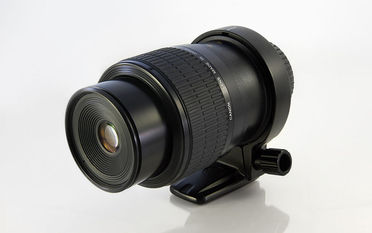Students will understand what macro photography is and create a macro photograph.
What is Macro photography?

Macro Photography is extreme close-up photography, usually of very small subjects.
For a photograph to be considered "macro" the size of the subject in the photograph must be greater than life size.
For a photograph to be considered "macro" the size of the subject in the photograph must be greater than life size.

When shooting macro photography, a "macro" lens specifically designed for close-up work is generally used. These macro lenses have long barrels to allow for close focusing and are optimized for excellent optical quality.
True macro lenses are able to magnify subjects, enabling photography of extremely small subject matter- such as small insect eyes, snowflakes, and other minuscule objects.
True macro lenses are able to magnify subjects, enabling photography of extremely small subject matter- such as small insect eyes, snowflakes, and other minuscule objects.
Depth of field in macro photography

Like we've already learned, one of the 3 factors that determines depth of field is your camera's proximity to your subject. The closer you are to your subject, the shallower your depth of field. Because we will be getting very close to our subject, we can expect to have a shallow depth of field in our photographs.
In some cases, your depth of field can be TOO shallow- so shallow that you are not able to get your entire subject in focus, rather only a part of it. In these situations it may be necessary to "stop down" your aperture (higher f/stop number) to increase the depth of field enough to get your entire subject in focus.
In the end it comes down to your personal preference. You may choose to have all of your subject in focus or just part of it. This works well in the example to the left, where only the insect's head is in focus and the rest is blurry. Always make sure that the most important part of your subject is in focus, as this is where your viewer's attention will go.
In some cases, your depth of field can be TOO shallow- so shallow that you are not able to get your entire subject in focus, rather only a part of it. In these situations it may be necessary to "stop down" your aperture (higher f/stop number) to increase the depth of field enough to get your entire subject in focus.
In the end it comes down to your personal preference. You may choose to have all of your subject in focus or just part of it. This works well in the example to the left, where only the insect's head is in focus and the rest is blurry. Always make sure that the most important part of your subject is in focus, as this is where your viewer's attention will go.
What exposure mode should I use?

Take control over depth of field by setting the camera mode to Av (aperture-priority autoexposure) mode.
In classic nature photography, for example, the artistic tradition is a very shallow depth of field and requires an open aperture (low f-stop value). But, like we mentioned earlier, if your depth of field is so shallow that you can not get enough of your subject in focus, you will want to stop down your aperture size to increase depth of field.
Again, it comes down to your personal preference and how much of your frame you want to be sharp and in focus.
In classic nature photography, for example, the artistic tradition is a very shallow depth of field and requires an open aperture (low f-stop value). But, like we mentioned earlier, if your depth of field is so shallow that you can not get enough of your subject in focus, you will want to stop down your aperture size to increase depth of field.
Again, it comes down to your personal preference and how much of your frame you want to be sharp and in focus.
How close should you get?

How "up close and personal" you can get with your subject depends on your lens, not your camera.
Ideally, we would be using actual macro lenses for this project, which allow you to focus at a very close range, however, we only have our "kit lens" available.
Our kit lens has a minimum focus distance of around 10 inches, meaning if you try to get any closer than that, your lens will not be able to focus properly.
Ideally, we would be using actual macro lenses for this project, which allow you to focus at a very close range, however, we only have our "kit lens" available.
Our kit lens has a minimum focus distance of around 10 inches, meaning if you try to get any closer than that, your lens will not be able to focus properly.
Your assignment:
Take at least 15 great macro shots. Look for interesting details in everyday objects, parts of buildings, plants, flowers, insects, people, anything! Use Av Exposure Mode to create a desirable depth of field in your photograph. Use either Auto or Manual focus to make sure that all or part of your subject is "tack sharp."
See Schoology.com for submission instructions.
See Schoology.com for submission instructions.



